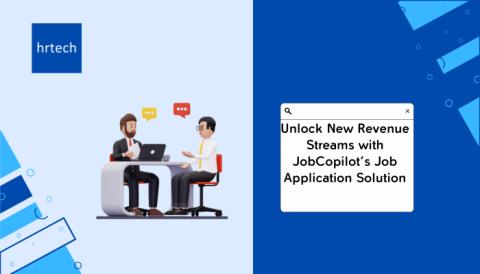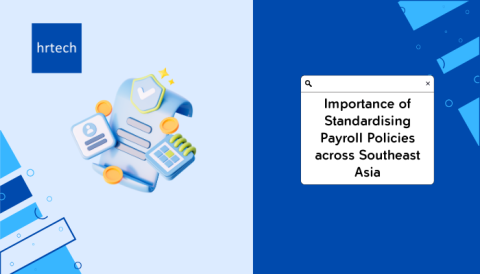HR transformation has become more important than ever. With new technology, changing workforce needs, and evolving business strategies, traditional HR methods are no longer enough. Successful HR transformation means more than just updating old processes; it involves rethinking how HR operates to be more strategic, flexible, and data-driven. By aligning HR goals with the company’s vision and using the latest technology, businesses can improve efficiency, boost productivity, and keep employees engaged.
This guide will cover the key parts of HR transformation in 2025, showing you how to adapt and succeed in a rapidly changing world. Whether you want to streamline operations, improve talent management, or bring new ideas to life, this guide will help you understand how to turn HR into a vital part of your business success.
What Does HR Transformation Really Mean?
HR transformation is about completely changing how the HR department works to better fit the company’s goals, especially in today’s tech-focused world. It’s not just about making small improvements but rethinking everything in HR to keep up with new technology and the changing needs of employees. A successful HR transformation makes HR a key player in helping the company grow and succeed, rather than just handling routine tasks.
Here are the main parts of HR transformation:
- Complete Overhaul of HR Functions: This means redesigning HR roles and processes to make the department more efficient and strategic.
- Aligning with Business Goals: HR transformation should directly support the company’s goals by focusing on managing talent, keeping employees engaged, and developing leaders.
- Using Technology: Advanced tools like AI in HR, HR analytics, and automation can help streamline HR tasks, making the department more efficient and improving decision-making with real-time information.
Understanding these points is essential for any organization looking to successfully transform its HR in 2025.
Key Elements of HR Transformation
1. HR Operating Model: Centralized, Decentralized, or Hybrid
Deciding on the right HR operating model is crucial to achieving a smooth transformation. The model you choose—centralized, decentralized, or hybrid—should align with your company’s goals and future growth.
- Centralized: Streamlined decision-making, but can be less flexible for local needs.
- Decentralized: More autonomy for different regions or departments, but managing it can become complex.
- Hybrid: Combines central control with flexibility, offering a balance between uniformity and customization.
Choosing the right model helps ensure HR aligns with broader business objectives, setting a solid foundation for future success.
2. Enhancing HR Capabilities: Skill Sets and Digital Solutions
HR transformation isn’t just about technology—it’s also about people. Upskilling your HR team to handle new digital tools and trends is essential in 2025. HR professionals need to embrace new roles as strategic partners, which means investing in their development.
Key areas to focus on include:
- Upskilling: Equip HR teams with modern skills such as data analysis, tech fluency, and change management.
- Digital solutions: Implement AI-powered recruiting, employee management systems, and digital performance tools to streamline operations.
By enhancing capabilities, HR teams can handle challenges more effectively and contribute to strategic decision-making.
3. Integration of Advanced HR Technology
Technology plays a central role in HR transformation. Advanced tools like cloud platforms and AI in recruiting are revolutionizing talent management, making processes more efficient and data-driven.
- Cloud-based platforms: Facilitate remote work and centralized access.
- AI in recruiting: Streamlines the hiring process, improves candidate matching, and reduces bias.
- Predictive analytics: Helps HR forecast workforce needs and anticipate trends.
Effective integration means aligning these technologies with your existing systems and ensuring they deliver real-time, actionable insights.
4. Data-Driven Approach for Decision-Making
In today’s world, decisions based on gut instinct no longer cut it. A data-driven approach allows HR teams to make informed decisions, backed by real-time information.
- Employee data: Track engagement and performance to enhance workplace culture.
- Predictive analytics: Use data to anticipate hiring needs and make better workforce planning decisions.
- KPIs: Set measurable goals for everything from turnover rates to employee satisfaction.
Using data effectively is key to optimizing the HR function and ensuring it plays a proactive role in achieving company goals.
Developing a Successful HR Transformation Strategy
To build a robust HR transformation strategy, companies need to begin by evaluating their current HR capabilities and performing a SWOT analysis to clearly understand their position. This analysis will highlight existing strengths while pointing out weaknesses that need to be addressed. Once this assessment is complete, it’s essential to identify the organization’s pain points, such as inefficiencies in recruitment, outdated processes, or low employee morale.
| Step | Description | Outcome |
| Assess Current HR Capabilities & Conduct SWOT Analysis | Examine the existing HR processes, skill sets, and technology infrastructure. Conduct a SWOT analysis to identify where HR stands. | Clear understanding of current HR strengths and areas needing improvement, setting a solid foundation for transformation. |
| Identify Organization’s Pain Points | Analyze specific HR-related challenges, whether in recruitment, talent management, or employee engagement. | Pinpoint key areas of inefficiency and underperformance, helping focus on the critical problems that need addressing first. |
| Create an HR Transformation Roadmap | Develop a step-by-step plan, complete with timelines, milestones, and resource allocation for the transformation journey. | A clear, actionable plan that outlines the path forward, giving structure to the transformation process and keeping teams aligned with goals. |
| Secure Buy-In from Leadership and Stakeholders | Present the transformation plan to leadership and other key stakeholders to ensure their support and alignment. | Full organizational backing, including financial support and necessary resources, which are critical to the success of the transformation strategy. |
Maximizing the Success of HR Transformation
To ensure a successful HR transformation, companies must focus on several key factors. HR transformation is not a one-size-fits-all approach; it requires active support, strategic alignment, and measurable results. Each element plays a important role in driving the transformation process, keeping it on track, and ensuring long-term success.
The line chart above shows the success rates associated with key factors that contribute to HR transformation:
- Gaining Support: With an 80% success rate, it highlights the importance of securing buy-in from both leaders and employees.
- Aligning HR Goals: Aligning HR with business priorities has a high success rate of 85%, indicating how critical this is for ensuring that HR drives organizational success.
- Incorporating Feedback: Incorporating insights and feedback mechanisms shows a 75% success rate, emphasizing the value of ongoing input from employees and leaders to refine the process.
- Setting Success Metrics: The highest success rate (90%) is for setting measurable success metrics, underscoring the importance of tracking progress to ensure transformation efforts deliver tangible results.
Choosing the Right Technology for HR Transformation
Selecting the right technology for HR transformation is crucial for ensuring the efficiency and success of your HR strategy. The right tools can streamline HR processes, improve decision-making, and contribute to achieving broader business goals. Here’s how to approach it effectively:
1. Importance of Aligning Technology Choices with Goals
When choosing HR technology, the first step is ensuring that the tools you select align with your organization’s strategic goals. The technology should help solve existing challenges in HR and support long-term business objectives, whether that’s enhancing talent acquisition, improving employee engagement, or streamlining operations.
Key Points:
- Identify your business objectives before choosing tech.
- Ensure that HR tools directly contribute to those objectives.
- Avoid “shiny object syndrome” by focusing on functional, goal-driven solutions.
Pro Tip: Choosing HR technology without aligning it with your business goals is like buying a fancy car without knowing where you’re going. Always prioritize purpose over features.
2. Exploring Talent Marketplaces and Skills Intelligence Tools
In the modern workforce, talent marketplaces and skills intelligence tools are game changers. Talent marketplaces allow you to optimize internal mobility by matching employees to the right opportunities within your organization. Meanwhile, skills intelligence tools help HR track the skills present in the workforce and identify gaps, ensuring you’re always equipped to meet future demands.
Key Points:
- Talent Marketplaces: Enable internal talent mobility by helping match employees with new roles based on their skills and interests.
- Skills Intelligence Tools: Provide insights into employee skill sets and identify areas for upskilling or external hiring. Both tools improve workforce flexibility and adaptability.
Did You Know? Companies using skills intelligence tools report a 25% increase in employee retention due to better internal mobility and personalized development paths.
3. Making Data Actionable for HR
One of the biggest advantages of HR technology is its ability to turn raw data into actionable insights. With the right tools, HR teams can move beyond spreadsheets and reports to real-time analytics that guide strategic decisions. This can improve hiring practices, enhance employee engagement, and optimize overall workforce planning.
Key Points:
- Data-driven decisions improve hiring efficiency, employee engagement, and workforce planning.
- HR technology can automate data collection and reporting, providing real-time insights.
- Predictive analytics tools help forecast future HR needs, such as staffing and skills development.
Pro Tip: Data is only powerful if it’s actionable. Ensure your HR technology includes analytics that provide real-time insights you can act on immediately.
How Can HR Teams Be Upskilled for Transformation?
Investing in these areas ensures that HR can drive the company’s transformation, maintain agility, and stay competitive in an ever-evolving landscape.
Breakdown of the Pie Chart:
The pie chart provided offers a clear breakdown of the focus areas when it comes to upskilling HR teams:
- Investing in Learning and Development Solutions (40%): This makes up the largest portion, emphasizing the importance of continuous education and training in preparing HR teams to handle transformation. These investments ensure HR is equipped to manage new technologies and strategies.
- Improving HR Skills for Strategic Objectives (35%): Close behind is the need to align HR skills with the company’s strategic goals. Upskilling for data-driven decision-making, leadership, and long-term planning helps HR contribute more to overall business success.
- Continuous Evaluation and Optimization (25%): A smaller but still crucial portion of the chart focuses on the ongoing process of assessing and refining HR practices to meet current and future challenges.
If you’re ready to upskill your HR team and drive meaningful transformation, reach out to us today through our Contact Us page. We’re here to help you prepare for the future!
Recognizing and Overcoming Challenges
HR transformation can come with its share of challenges that may slow things down or cause problems. It’s important to recognize these challenges early so they can be handled effectively. Common obstacles include resistance to change, the need for ongoing adjustments, and ensuring everyone stays committed to the process. Tackling these issues head-on is key to a smooth transformation.
Key challenges include:
- Handling Resistance: Employees and managers might push back against new systems or ways of working. Clear communication and proper training can help ease their concerns.
- Tracking Progress and Adjusting: It’s important to regularly check how the transformation is going and make changes when needed to keep things on track.
- Reinforcing Change Strategies: The process needs constant support and reminders to make sure everyone sticks to the new way of doing things.
By addressing these challenges early, companies can ensure their HR transformation is successful and sustainable.
Conclusion
Successfully transforming HR means aligning HR practices with the constantly changing needs of the business. As companies grow and evolve, HR must stay in step, supporting those changes with flexible and forward-thinking approaches. Strong leadership is crucial in driving HR transformation because leaders set the tone, guide the vision, and ensure the team stays focused on long-term goals. Lastly, embracing HR innovation helps companies stay agile and competitive, allowing them to adapt quickly to market changes and workforce demands.
hrtech plays an important role in this transformation by providing the tools needed to streamline processes, improve employee experiences, and make data-driven decisions. From AI-powered recruiting to cloud-based HR platforms, modern tech solutions are the backbone of effective HR strategies.
Ready to transform your HR for the future? Contact us today to learn how we can help your business stay ahead.





